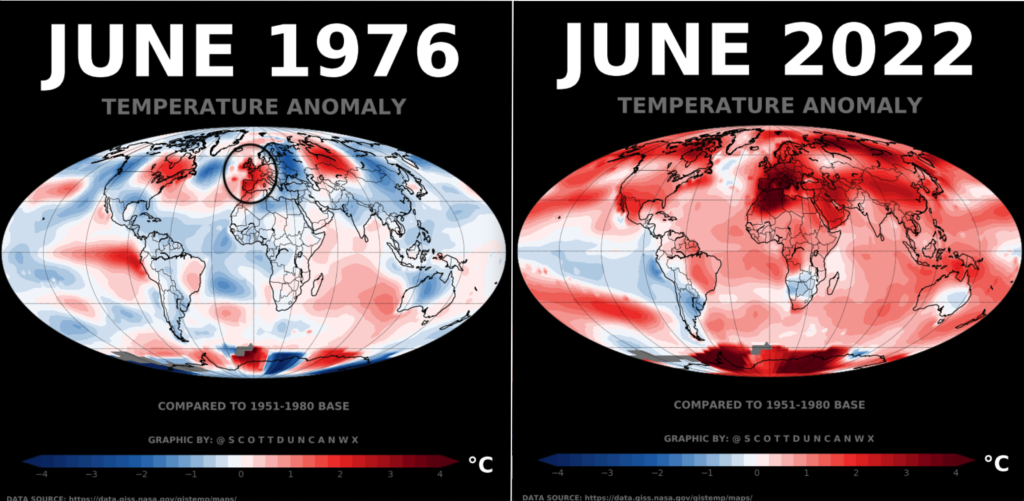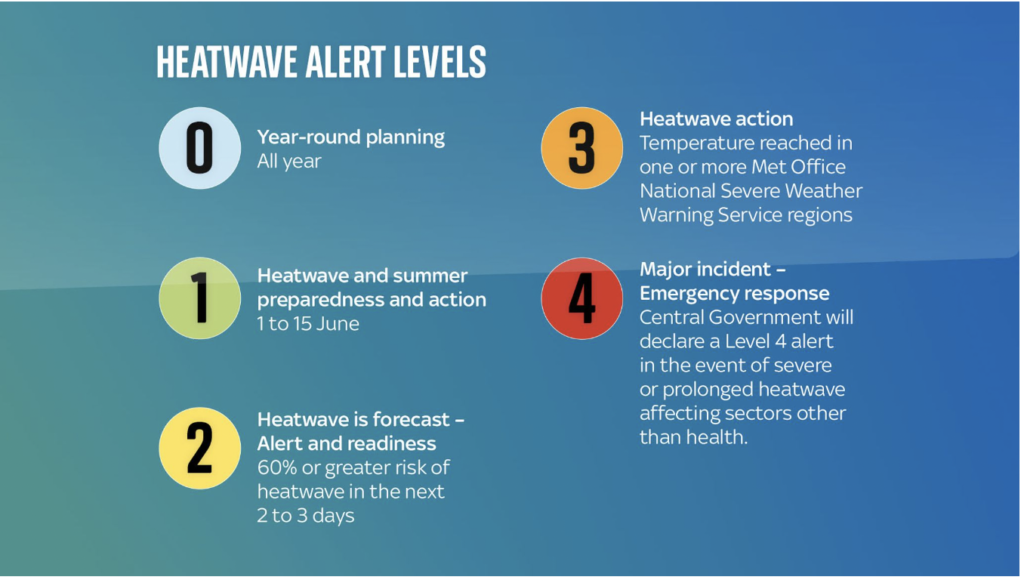The July near 40-degree mini heatwave, mainly in the form of the short sharp shock from 18 to 19th of July, is much more than just a hot spell. It’s a sign of global warming in action. It’s not just the UK either; all over the world, we have been seeing incredibly high temperatures with some countries enduring terrible wildfires.
1976 vs 2022:
The diagram below produced by @ScottDuncanWX shows the terrifying differences between the heatwave of 1976 and 2022. It’s not so much the temperature itself but how on a global scale how everyone is seeing a huge temperature jump.

Our planet’s average temperature has already increased by 1.1C since pre-industrial levels.
What is “pre-industrial?”
In 1784 the invention of the steam engine by James Watt meant people could effectively convert fossil fuels into energy – the process which releases carbon dioxide into the atmosphere (causing global warming). While coal was being burnt well before this date, the time just before this period is considered to be “pre-industrial” – essentially just before the start of the industrial revolution.
CO2 (carbon dioxide) is the largest contributor to global warming. Since 1750 its concentration has increased by 48%. According to a study, a heatwave which would have had a one in 10 chance of occurring in a given year in the pre-industrial climate will happen almost three times more frequently on average nowadays and will be 1.2C hotter.
Heatwaves and Global Warming
According to a growing number of climate scientists, these heatwaves, which are becoming more frequent and more intense, are a result of climate change. These extreme heatwaves are going to become more common in the future. It’s not just the heat, either. Storms and floods, and other extreme weather is also a result of climate change.
The warming trend will accelerate. By mid-century, the Met Office predicts a summer as hot as 2018 will happen every other year.
Below are the various Heatwaves Alerts. For the first time ever, the government issued a level 4 warning.

What We Need to Do:
We still have time to make changes to help limit the increase in global temperatures. According to the Paris Agreement, we must develop the global response to climate change by keeping a global temperature rise this century well below 2 degrees Celsius above pre-industrial levels and to pursue efforts to limit the temperature increase even further to 1.5 degrees Celsius.
According to the latest estimates, however, without major action to reduce emissions, our global temperature is well on track to rise by 2.5 °C to 4.5 °C by 2100. This means we would have failed to reach the Paris Agreement goals. If we immediately stopped producing greenhouse gases and became Carbon neutral today, global temperatures would stop rising in just a few years. It was originally thought that it would take hundreds of years to see any changes – but this is simply not the case. Scientists have discounted this “baked-in” (CO2 stuck in the atmosphere) warming idea for a number of years now. The fact is that oceans, vegetation and soil will continue to absorb CO2 at the same rate it currently does. So if we were to become carbon neutral now, a positive change would happen and happen relatively quickly. That’s in theory, at least.
Halving our CO2 Output by 2030 (We need to do this!)
Durning COP26 (UN Climate Change Conference), which took place in October 2021, a significant focus was placed on what can be done as a ‘last-ditch attempt’ to limit global warming to less than 1.5 degrees above pre-industrialised levels. The fact is we need to almost half our current global CO2 output by 2030 if we are to stand a chance of reaching Net Zero by 2050.